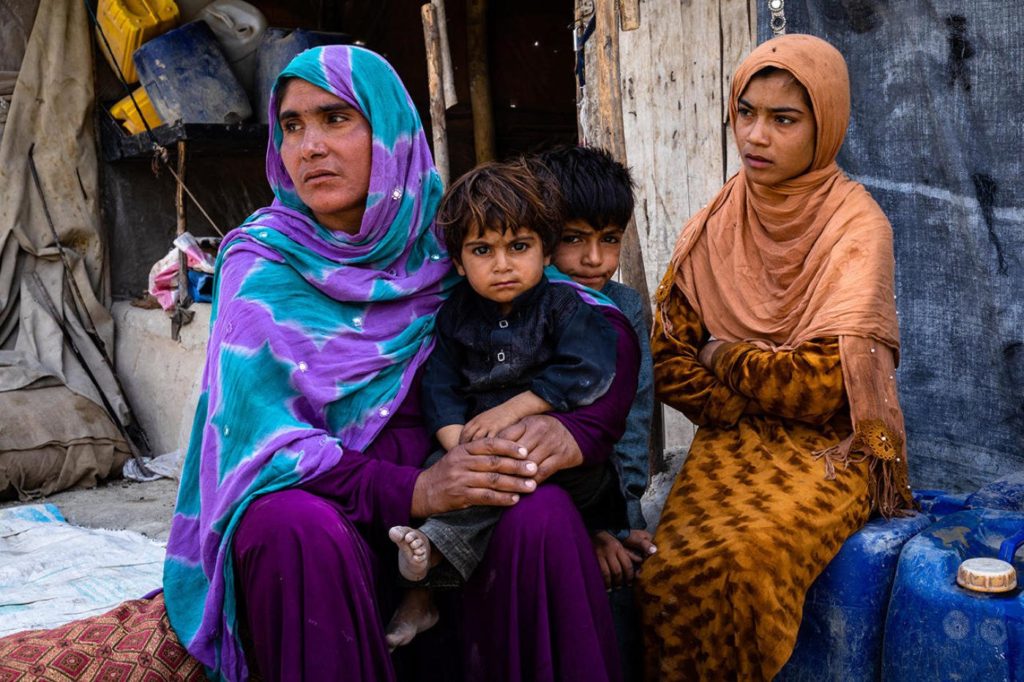New York, August 29 – Afghanistan’s people continue to face extreme hardship and uncertainty but among the 19 million people facing acute levels of food security are 3 million children with one million of them suffering a form of malnutrition that could kill them, the top UN humanitarian coordinator told the UN Security Council.
Martin Griffiths, the Under-Secretary-General for Humanitarian Affairs and Emergency Relief Coordinator, said the UN humanitarian team, NGOs and other organizations working in Afghanistan have found it challenging and “labor intensive” to deal with the de facto Taliban authorities in Kabul.
“An estimated 3 million children are acutely malnourished,” Griffiths told the 15-nation council convened to discuss the dire living conditions in the country. “They include over 1 million children estimated to be suffering from the most severe, life-threatening form of malnutrition. Without specialized treatment, they could die.”
He said close to 19 million are suffering acute levels of malnutrition caused by recurrent drought, including the worst in three decades in 2021, and 6 million of them are at risks of famine. Griffiths said 8 out of 10 Afghans drink contaminated water, which caused repeated bouts of acute watery diarrhoea.
Griffiths provided alarming facts regarding the humanitarian situation in Afghanistan. He said around 25 million people, or about half of the country’s population, are now living in poverty who spend three quarters of their income on food. The number of Afghans receiving remittances have dropped 50 per cent and unemployment grew to 40 per cent while inflation has risen due to increased global prices, import constraints and currency depreciation.
Afghanistan was hit in June by a 5.9-magnitude earthquake that affected 362,000 people living in high-intensity impact areas and heavy rains since July caused massive flash floods across the country, killing and injuring hundreds of people, and destroying hundreds of homes as well as thousands of acres of crops. An estimated 5.8 million people remain in protracted internal displacement requiring long term solutions.
“All these figures are devastating and difficult to comprehend,” Griffiths said. “We worry that they will soon become worse. Once the cold weather sets in, food and fuel prices – already high – will skyrocket, and families will have to choose between feeding their children, sending them to school, taking them to a doctor when they fall sick, or keeping them warm. Large-scale development assistance has been halted for a year.”
“The operating environment is exceptionally challenging.” “Engaging with the de facto authorities at national and sub-national levels is laborintensive,” Griffiths said, adding that there is “no confidence” in the domestic banking sector, which led to a severe liquidity crisis and international financial transactions “are extremely hard due to de-risking and overcompliance of global banks.” He cited the case in which humanitarian organizations brought in over US$1 billion in cash to sustain program delivery, “but the liquidity and banking crisis continues to impact the delivery of assistance and Afghans’ daily lives.”
“The Humanitarian Exchange Facility, meant to temporarily and partially alleviate this, is still under deliberation with the de facto authorities.”
Women and girls have been pushed to the sidelines. “The meagre gains the country made to protect women’s rights have been quickly reversed. It’s been more than a year since adolescent girls in Afghanistan last set foot inside a classroom. In the 21st century, we should not need to explain why girls’ education and women’s empowerment are important to them, to their communities, to their countries and indeed to the world.”
Gap in funding
Griffiths said the Humanitarian Response Plan for Afghanistan has a gap of $3.14 billion, with $614 million urgently required to support priority winter preparedness activities, such as upgrades and repairs to shelter, and providing warm clothes and blankets. “But we are up against time. These activities must be implemented in the next three months,” he said.
United Nations correspondent journalists – United Nations correspondent journalists – United Nations correspondent journalists – United Nations journalism articles – United Nations journalism articles – United Nations journalism articles – United Nations News – United Nations News – United Nations News

